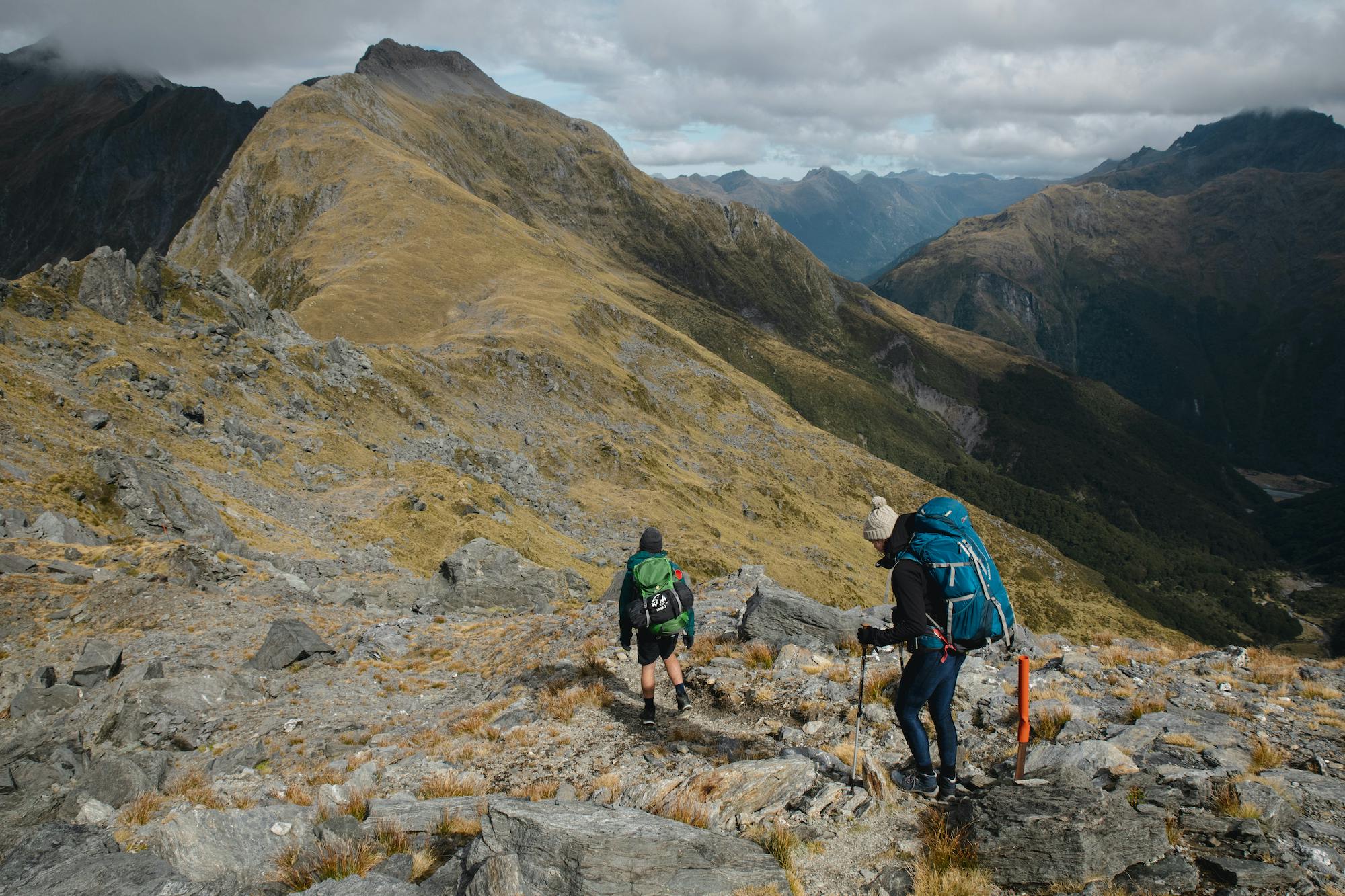A wrap of the biggest stories and best writing about the outdoors from New Zealand and around the world.
The case for a heavy pack
Outside magazine’s Jenna Woginrich has made her case for carrying a heavy pack.
“I hike because it’s a chance to experience primal pleasures,” she writes.
“That is why I carry a heavy pack. It has the magical ability to alchemize sore muscles and sweat into gratitude and instant nostalgia.”
Woginrich, who enjoys hiking with a hammock, thermos and hardcover novel, said she packs nearly 10kg for an average day walk.
“If consuming expensive thru-hiking gear gets you excited about being outside, enjoy your dopamine where you can get it. It’s your money and your hike,” she said.
“But I urge you, at least every once in a while, to be a draft pony instead of a race horse on the trail.”
Read the full story here.
Pair tackle NZ’s 24 highest peaks in a month
A pair of mountaineers have climbed New Zealand’s 24 highest peaks in a month.
The two Kiwis, Alastair McDowell and Hamish Fleming started their mammoth effort on November 13 and topped their final summit on December 12.
“This was just an epic adventure. It was an adventure that we didn’t even think we could achieve,” Fleming said.
The summits were climbed in one continuous trip and the entire journey was human-powered, which saw the pair cycle from Aoraki Mount Cook National Park to Mt Aspiring National Park.
“It wasn’t an overly technical challenge – it was more about the mental aspect of being on lots of exposed terrain, just gritting your teeth for hours and hours and hours on end,” McDowell said.
The New Zealand Herald has the full story.
Ruapehu enters heating phase
Kiwis have been advised not to visit Ruapehu’s Crater Lake, due to a volcanic warming phase.
A 700m exclusion zone has been drawn around Ruapehu, and visitors have been told not to camp overnight within 1.5km of the lake.
“Mt Ruapehu is an active volcano and has the potential to erupt with little or no warning when in a state of volcanic unrest,” GeoNet volcanologist Craig Miller said.
No tracks or facilities in Tongariro National Park have been affected by the exclusion zone, DOC said.
Read more here.
Bird threat report a mixed bag
The latest bird threat classification report has good news and bad for our endemic species.
Of the 491 species assessed by experts, 25 species improved their conservation status, while 22 declined.
This includes five species moving out of ‘Nationally Critical’, which is the final classification before extinction.
North Island brown kiwi moved from ‘At Risk – Declining’ to ‘Not Threatened’ and Haast tokoeka shifted from ‘Nationally Critical’ to ‘Nationally Vulnerable’.
Black back gulls also moved from ‘Nationally Critical’ to ‘At Risk – Declining’, after surveying discovered more breeding pairs.
DOC has the full story.
Kea shot in Golden Bay
Conservationists are appealing for information after two kea were shot dead in Golden Bay.
The birds were discovered and handed in by members of the public, who found the bodies near Ligar Bay.
“Killing kea goes against the hard work being done by people in our community carrying out predator trapping and other measures to protect native species, including these intelligent and inquisitive parrots,” DOC’s Dave Winterburn said.
Killing protected wildlife carries a maximum penalty of up to two years in prison or a fine of up to $100,000.
Read more here.







